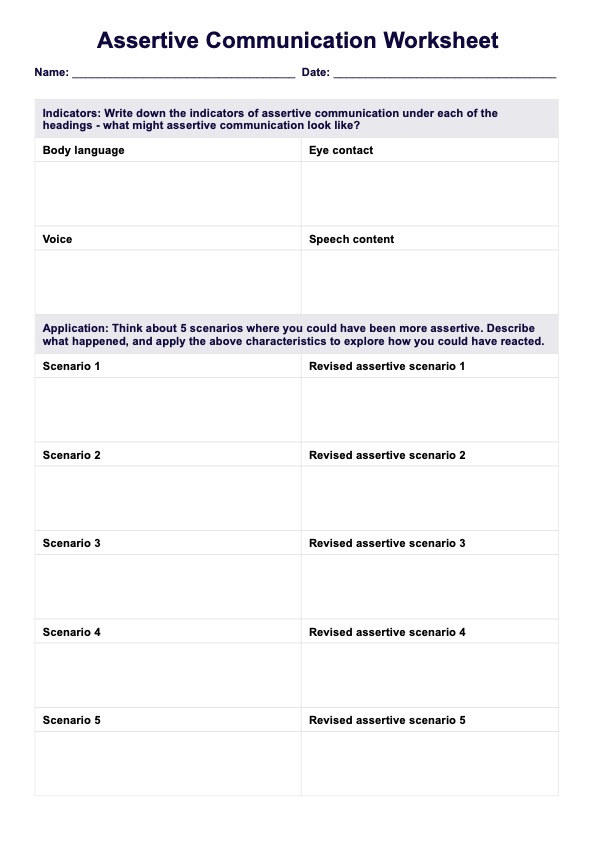It can take 20 - 30 minutes at the very least. Just make sure to give your client time and space. There’s no point in rushing.

Assertive Communication Worksheet
Read this guide to learn what the Rights of Assertiveness worksheet does. Access a free PDF template and example to get started.
Assertive Communication Worksheet Template
Commonly asked questions
That depends on the person and how well they’ve understood the therapist’s assertive communication teachings. If they’ve understood it well and they know exactly what conversation examples and contexts to use, they will have an easier time. Whatever difficulty that may arise will be based on choosing the particular conversations that the rights apply to the most (since they do have to think about this) and if they understood the concepts.
You might want to try roleplaying to see how the client can actually enact what they’ve written down. That’s how you’ll truly see if they know how to conduct themselves based on the assertive communication training they received and based on what they wrote on the worksheet.
EHR and practice management software
Get started for free
*No credit card required
Free
$0/usd
Unlimited clients
Telehealth
1GB of storage
Client portal text
Automated billing and online payments











